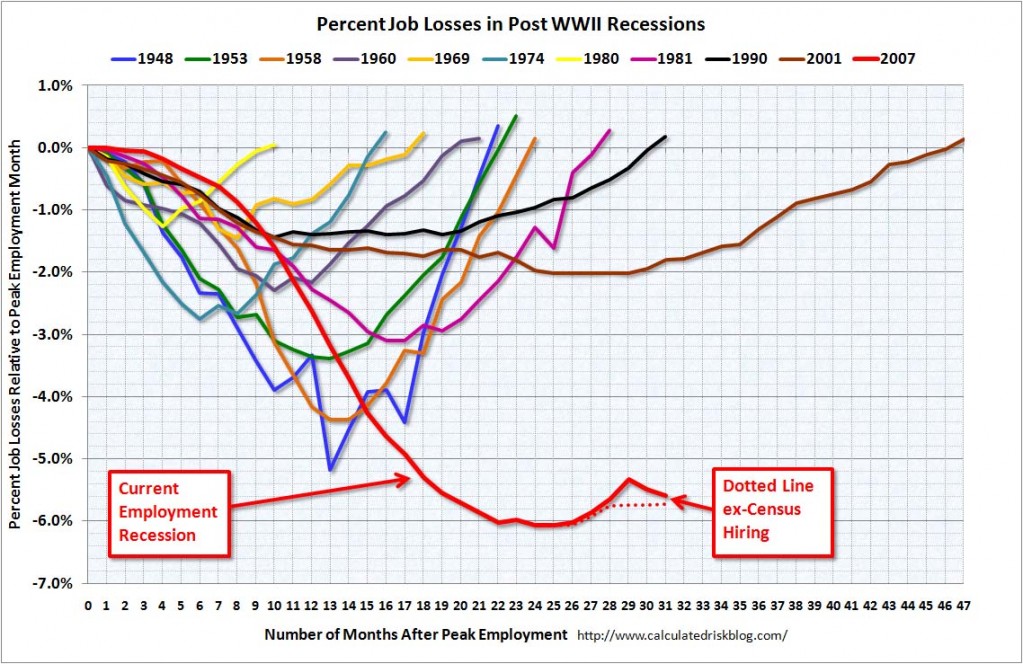Now that the President’s plan to help homeownevers, HAMP, has clearly proven to be a failure, let’s go back to how to do it correctly.
What the government should do instead is set up a Trust to buy mortgages at a discount, then reset them to 20, 30 or 50 year fixed mortgages with a reduced face amount. If the house is later sold, half of the increase goes to the government, so that taxpayers make a profit. The mortgage cannot be paid off before the end of its term so that financial scavengers cannot come around and, as they did over the last ten years, say “get rid of that mortgage, and take ours. It’s better. Honest!”, because we know that when they say better, they don’t mean better for the mortgage holder. The mortgage is attached to the property and is transfered to any new buyer. And the mortgage cannot be removed from the property, and any new mortgages attached to the property are junior to the government mortgage.
Now, when I first made this suggestion back in 2008, the banks would have been eager to sell. Right now they won’t, because they have record profits. So using this plan also requires a whip hand. If the banks won’t sell, then the Fed starts pushing back onto them the bad paper of theirs it is holding (which includes a pile of bad mortgages), or raises rates for the banks, or just threatens them with accounting changes which will force them to recognize their losses right now (there are plenty of losses that should be on the books.)
Or you could just pass a law forcing the banks to sell underwater mortgages, but let’s face facts, that isn’t happening in this Congress.
End results:
a) a floor is set for mortgage prices (the price should be based on what the long run price was in the area before the housing bubble.) This ends the confidence crisis in these securities (yes, there is still a confidence crisis, it’s just muted because the Fed, Freddie and Fannie are sitting on the toxic waste pile they took from banks), because there is now a market price—what the Trust will pay.
b) It helps homeowners stay in their homes.
c) It gets rid of overly complex mortgages and puts in their place a dead simple mortgage that anyone can understand.
d) It punishes lenders, which they deserve, for making loans they should never have made. On the other hand, they get more money than they probably could on the open market if the Feds weren’t keeping bad securities off the market.
e) While it does keep homeowners in their homes, it doesn’t let them off scot-free either. In exchange for a good mortgage they can service, they give up some of the future profits on sales in their houses.
f) The government will almost certainly make a long term profit on this. This is important, because it’s not fair for people who aren’t underwater on mortgages to spend hundreds of billions or trillions bailing out those who are without some expectation that in the end it won’t be more than just a transfer of wealth to them and to investors and banks.
In 2008 I wrote:
If they do give the administration what it wants, then Wall Street and the Banks just got bailed out, no help goes to ordinary people and you get stuck with a trillion dollar bill. Taxpayers get all the toxic assets, but Wall Street, who paid themselves more in bonuses in 2007 then 80 million Americans got in raises, keeps the profits.
And that’s exactly what happened.
It would be beyond swell if Democrats got serious about actually helping homeowners in a way that’s good for the country and good for homeowners, rather than a placebo meant to look like action is being taken.

